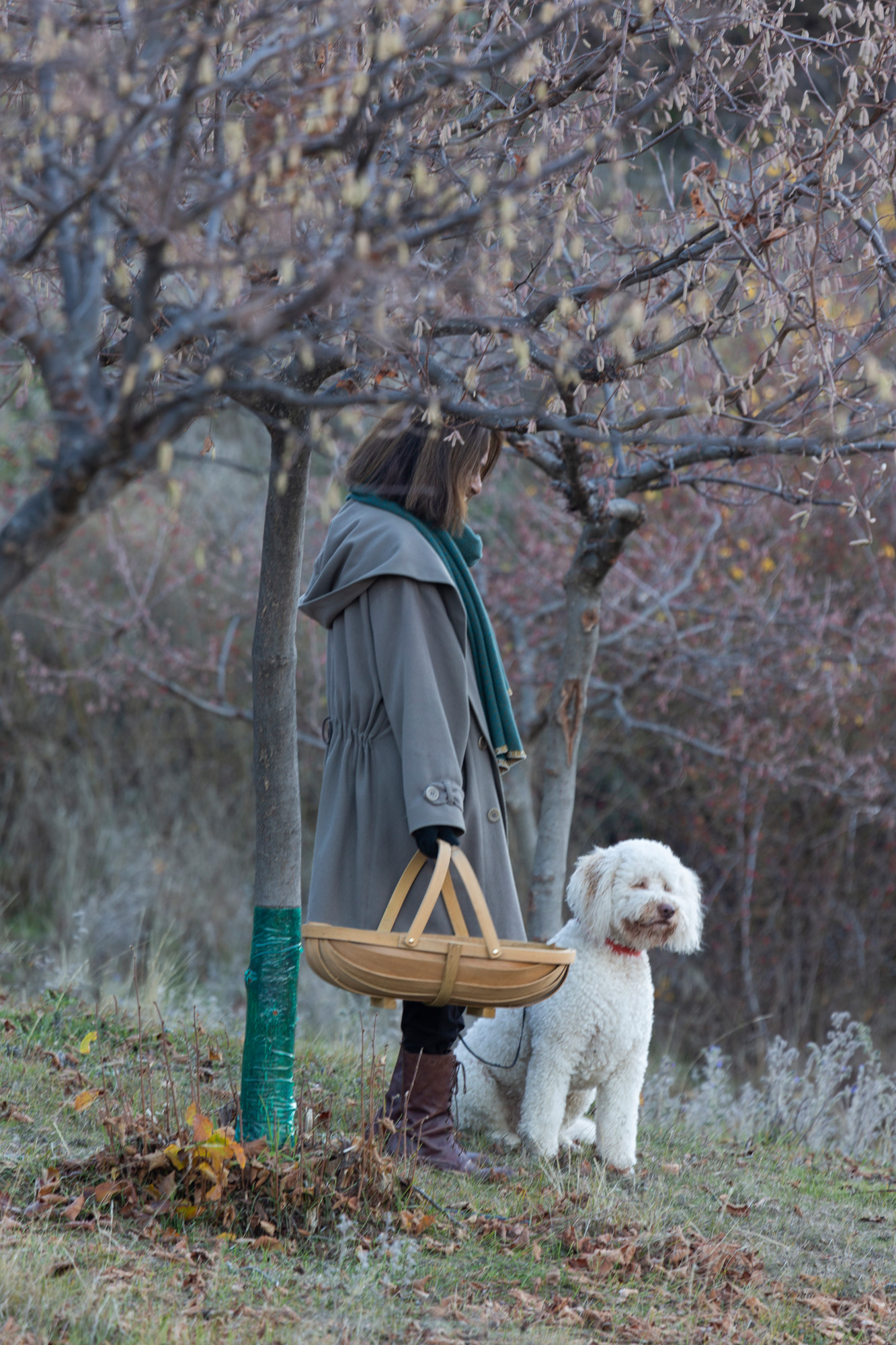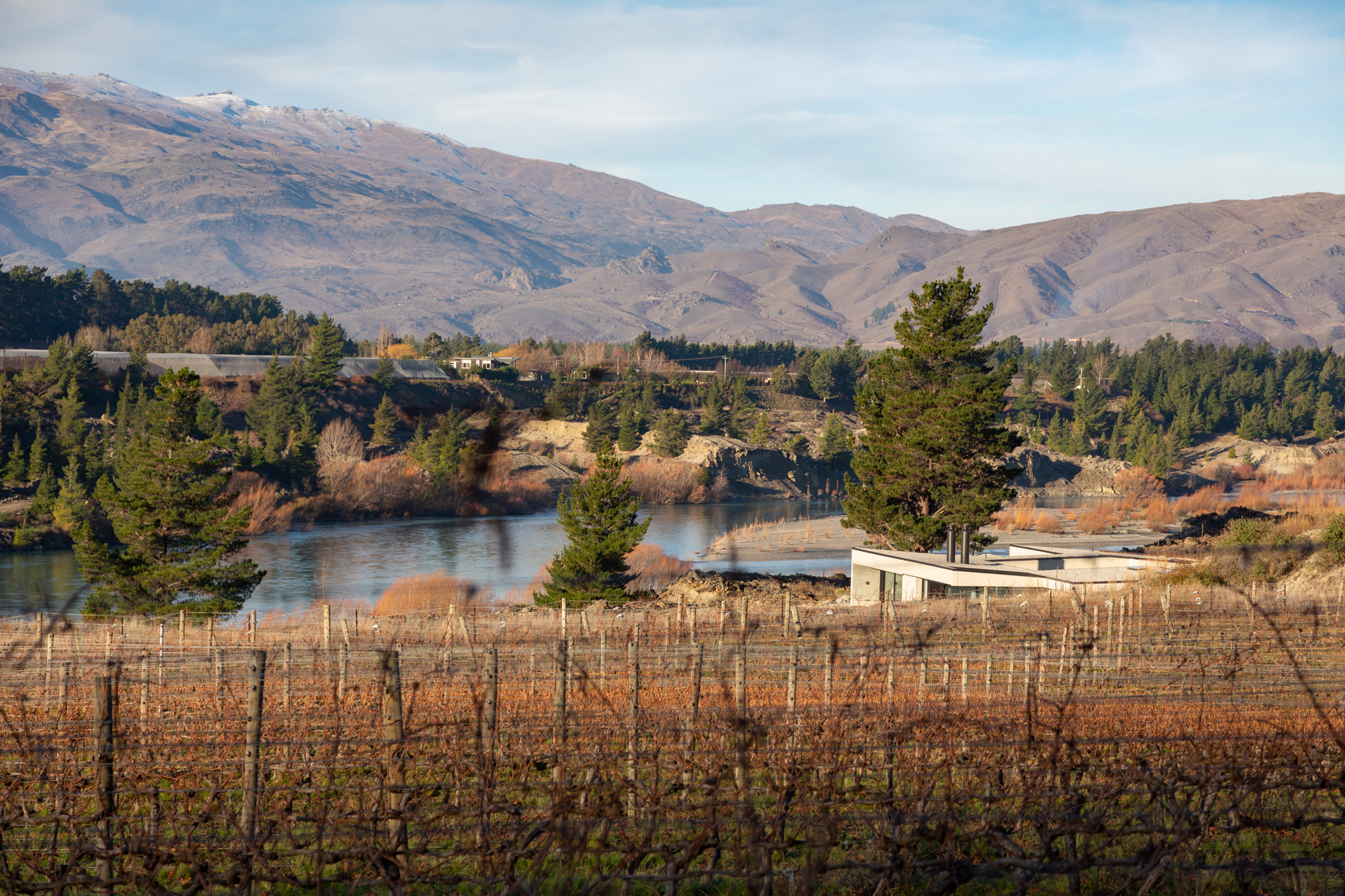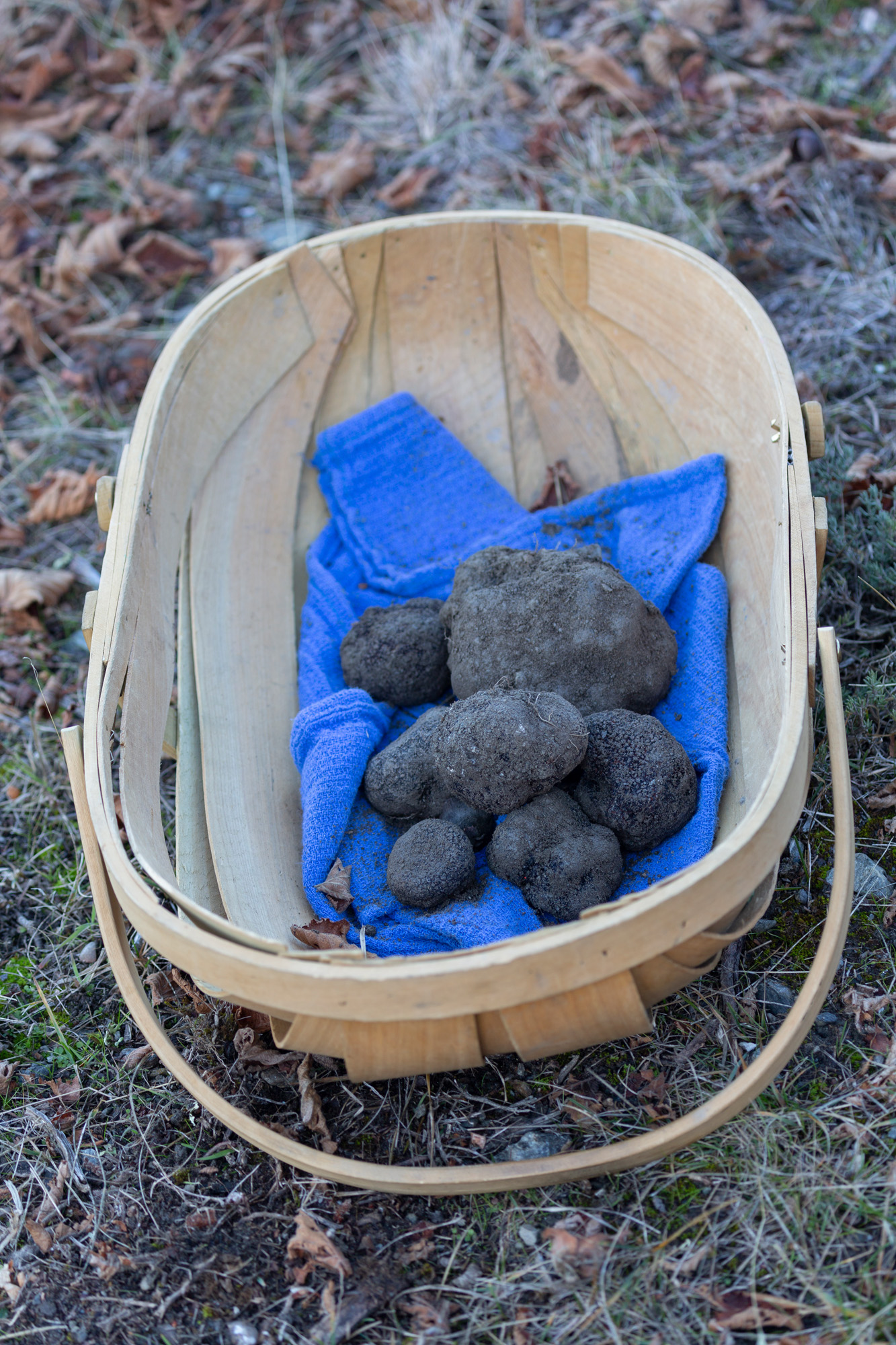On a striking piece of land that stretches out behind the 2021 Home of the Year above the Kawarau River, two Dunedin locals have achieved something spectacular – a sustainably farmed estate producing three very distinctive and highly desirable edibles.
It’s safe to say the 19th-century miners who excavated this goldfield in Central Otago would never have imagined the remnants of their work would one day play host to Pinot Noir, truffles, and olives. However, that’s precisely what Rod and Mirani Keillor have curated on their magnificent Black Quail Estate in Bannockburn, Central Otago. There’s no mistaking the care and attention they’ve put into this land, either.

Today, the Keillors’ 25 hectares of fertile land is home to a thriving vineyard, an olive grove, extensive vegetable gardens, and the southernmost truffiѐre producing black Périgord truffles — a significant change from its former use as a sheep farm, and its origin as a rich alluvial goldfield.
Black Quail Estate sits above the Keillors’ recently built, spectacular Black Quail House, which was named the overall winner of Home of Year 2021. The house, designed by Barcelona-based New Zealander Bergendy Cooke, sits on the edge of the Kawarau River — the last house before Kawarau Gorge — and, for now, is used as a weekend retreat from the Keillors’ home in Dunedin.
The Keillors are very aware of the importance of their role as custodians of this strikingly beautiful piece of land, and utilise a range of methods to protect and enhance it. Mirani explains that the vineyard has been farmed under certification from Sustainable Winegrowing New Zealand for more than a decade, with a focus on reducing agrochemicals and increasing the health and biodiversity of the soils in which the vines grow.
Visually, that is more obvious at certain times of the year, particularly when the wildflowers planted from seeds bloom along the rows of vines — a tactic Mirani explains is used to naturally increase the organic matter as well as provide food and shelter for a wider community of insects.

“In the near future, we aim to reduce the need for herbicides completely and to actively improve the carbon sequestration of the full property.”
The whole place is a holistic operation. The house has a warm roof, designed to ensure condensation cannot form in the roof cavity and covered with river shingles to allow the house to become embedded in the land; underfloor, the heating is run from a geothermal source around the headlands of the vineyard.
Over many years, the couple has supplemented their boutique wine-making operation with lovingly cultivating the truffière, which is also managed with utmost care; the Keillors ensure they use no sprays, and the hazelnut trees are pruned and the cuttings used as mulch for vegetable gardens around the house.
“We were the first people in the region to produce black Périgord truffles. When we first planted the truffle we didn’t think it was going to take off, but it has,” Mirani says.
The couple’s truffle story started around 16 years ago.

“Rod knew Dr Ian Hall, who was the pioneer of that particular mushroom’s industry in New Zealand. [They] got talking and he said, ‘The climate could be right in your region for truffles’.”
The Keillors started by soil monitoring on a smaller part of land at the end of their vineyard. When the results came back with the promising news that the soil temperatures could be viable, they planted some 200 hazelnut trees over an area of about two hectares.
The Périgoid black version grows below ground on the roots of the hazelnut host tree. The spores of the fungus are injected into the roots of the host tree, and, in a lovely example of symbiosis, the hazelnut host tree provides the necessary carbohydrates and conditions for the truffle to grow and, in turn, the truffles provide the host tree with its own necessary nutrients.
The produce from the truffière is welcomed by local restaurants.
As Mirani describes it, “It’s such a mystical product, really. We are really small and it’s not our day job. We just fit it into our weekends; if we feel the truffle is not quite ready, we will come back the next weekend. We are not doing it as a major industry yet, but once we retire it may become something we do more seriously. Now, we have a good clientele who love me walking in with my basket of truffles.”
The olives are turned into a healthy supply of olive oil for the Keillor family, while the Pinot Noir is also distributed locally. The Keillors have been making a yearly vintage since the early 2000s, and deliberately keep production small — to less than 500 cases per year.

Mirani explains, “We are a very small producer in the market. We have really good, stable customers who have had us on their wine list right from the start. Small boutique wine stores also sell our wine. I am the entire marketing department.”
There are other exciting things on the horizon for Black Quail Estate, including expanding the truffière to include borchii white truffles.
“We have some fruit trees. I am developing a meditation garden in the truffière, and it’s our vision to see an artists’ retreat built at our vineyard [to be] used as a residency for an artist for a couple of months a year, and then as a vineyard holiday retreat for the rest,” Mirani tells us.
Bannockburn is a beautiful place, and the Keillors have certainly put it on the map with their new house and estate.
As Mirani puts it, “We had a bare piece of land and we’ve slowly created something really special.”






